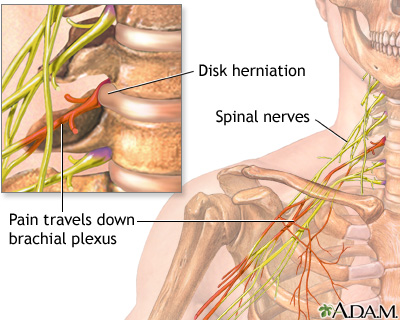Most people will experience neck pain at some point in their lives. Neck pain can be acute, meaning it lasts a few hours to a few weeks, or it can be chronic. Neck pain that lasts several weeks or longer is considered chronic neck pain.

Most causes of neck pain aren't serious. Poor posture at work, such as leaning into your computer, and during hobbies, such as hunching over your workbench, are common causes of neck pain.
But sometimes neck pain can signify something more serious. If your neck pain is so severe that you can't touch your chin to your chest despite a few days of self-care, seek immediate medical attention.
Neck pain takes many forms. Signs and symptoms of neck pain may include:
- Pain in your neck that may feel sharp or dull
- Stiffness in your neck
- Difficulty going about your daily tasks because of pain or stiffness in your neck
- Shoulder pain in addition to neck pain, in some cases
- Back pain in addition to neck pain, in some cases
Your doctor often will be able to diagnose the cause of your neck pain and recommend treatment just by asking questions about the type, location and onset of your pain.
In less clear-cut cases, your doctor may use imaging techniques or other tests such as:
- X-rays


- Magnetic resonance imaging (MRI)

- Computerized tomography (CT) scans
- Electromyography (EMG)
NECK EXCERCISES:


Treatment of NeckPain
The treatment of neck pain depends on its precise cause. Treatment options include rest, heat/ice applications, traction, soft collar, traction, physical therapy (ultrasound, massage, manipulation), local injections of cortisone or anesthetics, topical anesthetic creams, topical pain patches, muscle relaxants, analgesics, and surgical procedures.